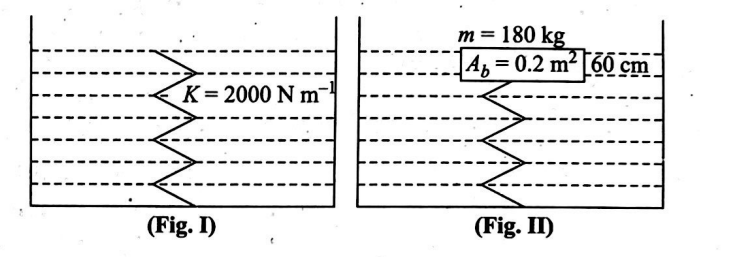Q.
In a tank of horizontal cross-sectional area $1\, m ^{2}$, a spring with force constant $2000\, N\, m ^{-1}$ is fixed in vertical position upto the height of the water as shown in figure I. A block of mass $180\, kg$ is gently placed over the spring and it attains the equilibrium position as shown in figure II. If base area of the block is $0.2 \,m ^{2}$ and height $60 \,cm$, then find compression (in $cm$ ) in the spring in equilibrium position.
(Take $g=10\, m / s ^{2}, \rho_{w}=1000\, kg / m ^{3}$ )

Mechanical Properties of Fluids
Solution:

